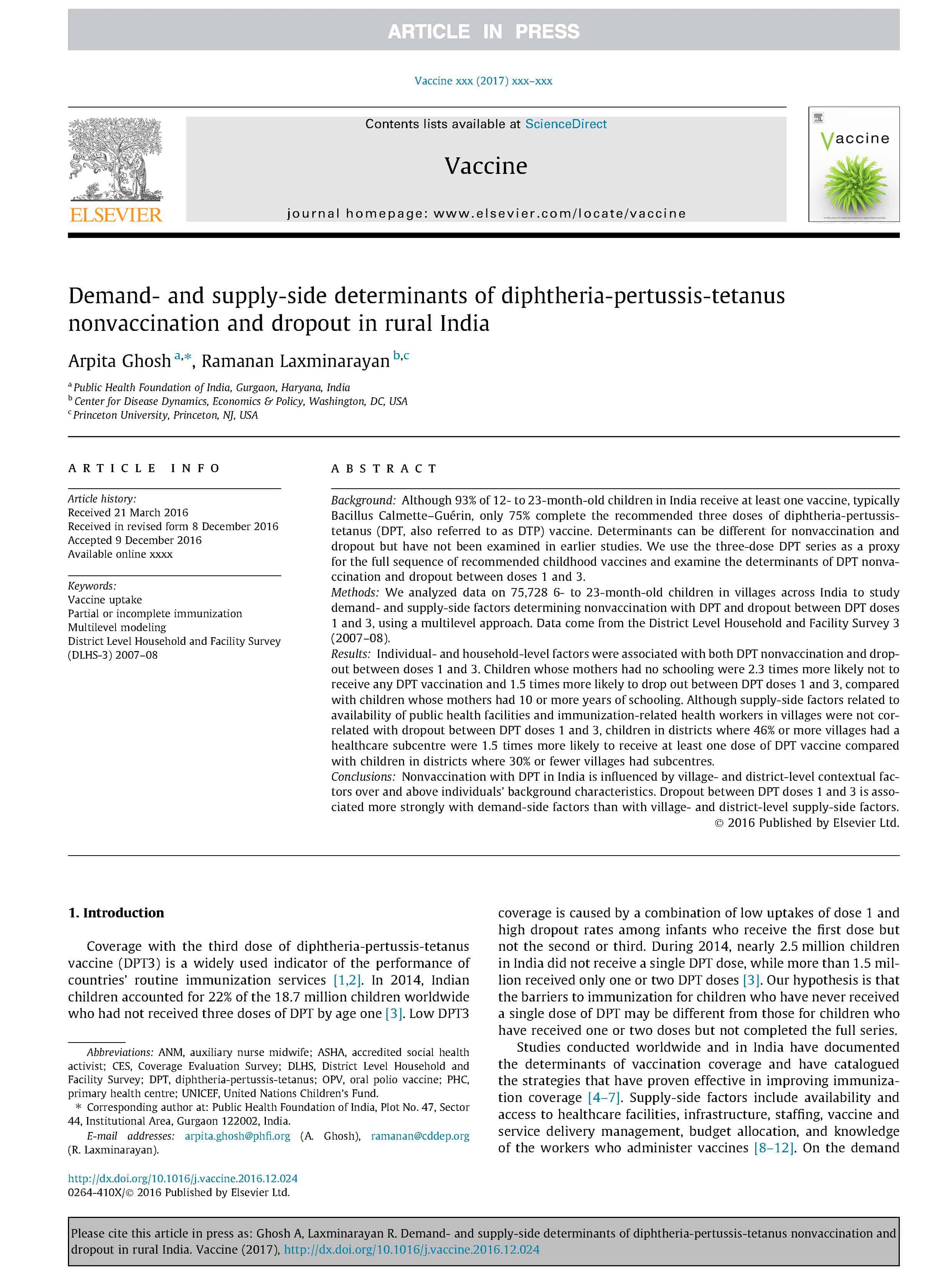January 17, 2017

The Question: CDDEP Director Ramanan Laxminarayan and co-author Arpita Ghosh have analyzed the factors in India associated with both DPT nonvaccination and DPT vaccination dropouts—children who received only one or two doses, but not all three.
The study, published in Vaccine, looked at “demand-side factors”—mainly family characteristics, and “supply-side factors”—related mainly to healthcare access associated with both nonvaccination and vaccination dropouts.
The study used data from more than 75,000 infants in villages across India, from the District Level Household and Facility Survey (DLHS-3), conducted during 2007-2008.
What We Found:
- Children whose mothers had no schooling were 2 to 3 times more likely not to receive any DPT vaccination and 2.5 times more likely to drop out between doses one and three, compared with children whose mother had 10 or more years of schooling.
- Children in districts where at least 46 percent of villages had a healthcare subcentre were 1.5 times more likely to receive at least one dose of DPT vaccine, compared with children in districts where 30 percent or fewer villages had subcentres.
- Both types of factors affected vaccination rates, but demand-side factors—like parents’ level of education and household wealth—had a greater effect than supply-side factors, such as healthcare infrastructure.
Why It Matters: According to author and CDDEP Director Ramanan Laxminarayan, “Knowing the contextual factors of nonvaccination and dropout is very important in forming effective policies to ensure children are vaccinated.”

